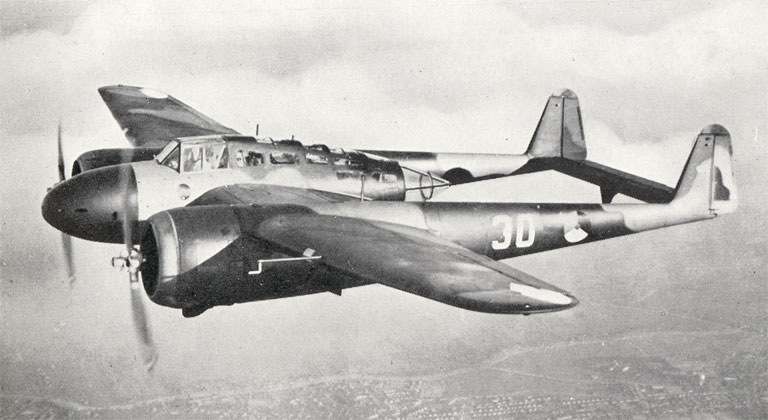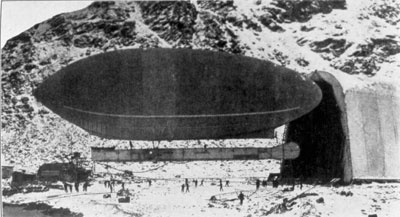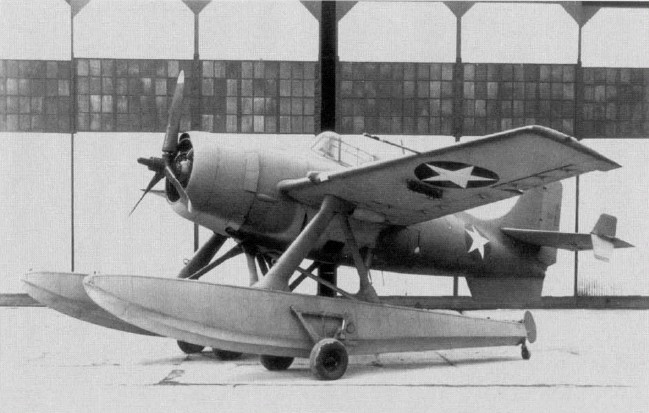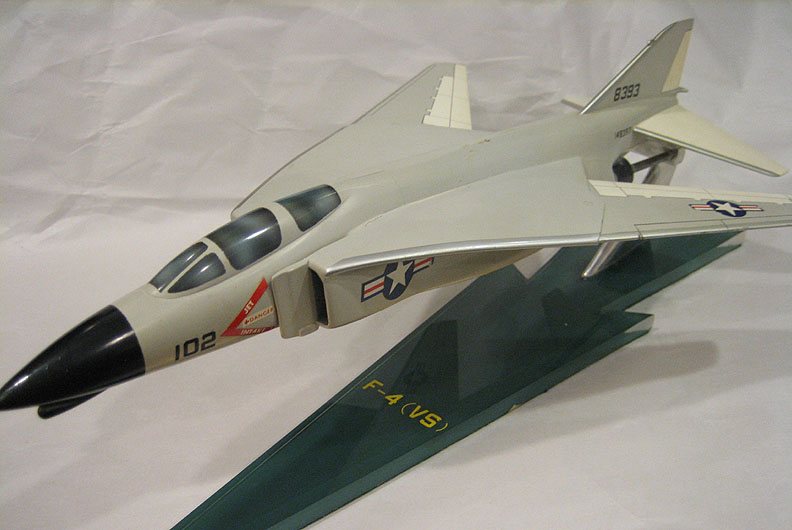Fariey Fulmar Strike plane MK1, MK2 and Mk3
Overshadowed by its more glamourous Hanger mate the Supermarine Sea Spitfire the Fulmar Multirole Strike Aircraft played a vital role in defending the Royal Navy and convoys as well as being for most of the war the principle strike plane of the fleet.
Developed from the later cancelled P.4/34 Specification calling for a light dive bomber the Fulmar was initially chosen as a fleet defence fighter O8/38 Specification for the expanding Fleet Air Arm.
However with the successful introduction of the Vickers built Supermarine Sea Spitfire as the fleets main defence fighter in 1939 it had looked like a certanty that the Fulmar Fighter would be canned and orders limited.
Fairey however pushed on with the design and modified it as a Dive bomber a relatively easy task given its pedegree.
Easily able to carry an equivilent bomb load to the Blackburn Skua and with Twice the range and much greater performance it was chosen as a replacement and by late 1939 it had replaced the Blackburn Skua in front line fleet service.
This was a boon to the Royal Navy as it gave the fleet a second useful fighter which despite its poor performance relative to other single engined types of the day was to prove more than able to hold its own during the early war battles in the Med.
In 1940 the Mk1 gave way to the Mk2 with a more powerful 1300 HP engine improved range - 4 x .50 cal MGs and capable of carrying a 1000 pound bomb.
This Aircraft along with the Mk2 Sea Spitfire allowed the Royal Navy's carriers to operate in the Littorial evironment of the central Med that should on paper have been denied them and with its .50 cal guns was more than capable of dealing with the 3 Engined Italian bombers that had so concerned the Admiralty Pre War.
Indeed between 1940 and 1943 half of all Italian Bomber losses in this area had been to mk2 Fulmars.
Mk1 and Mk2 Fulmars operated by RAF in Malta provided the back bone of the Islands defence throughout most of 1941
By the time the war started in 1940 the admiralty was a little disappointed in the Swordfish replacement the Fairey Albacore and so using a Mk2 Fulmar airframe and the new 1700 HP RR Griffon engine - trails began to see if it could be modified as a torpedo plane.
The trials were a sucess and with mounting delays to the Fulmars expected replacment, the Fairey Firefly, the Mk3 was ordered as a 'multirole' strike plane "as an interim measure" after the bombing of Fairey Aviations factory at Ringway in late 1940 which seriously impacted planned procution of both more Albacores and the planned Barracuda
Eventually 750 of this interim measure aircraft would be built and would form the backbone of the fleets carrier wings.
This aircraft armed with 4 Hispanio 20mm cannon and capable of speeds of over 300 MPH (clean) and also able to operate in the Torpedo, Dive Bomber, Recon and escort fighter role replaced both the Albacore and earlier Fulmars on Fleet carriers by the end of 1941 and on the Light fleet carriers by the end of 42.
Fulmar Mk3s were part of Force Zs Strike wing agaisnt Japanese landing fleets during the Malaya campaign in Dec 41 and aircraft operating from Ark Royal and Formidable sank 7 transports and 3 destroyers and well as damaging several crusiers as well as providing medium altitude cover for Admiral Phillips Fleet between 9th and 14th Dec when large numbers of Japanese Air based bombers attempted to attack the fleet.
Force Z later went on to become the core of a Multinational task group officially called ABDA but in practice remained Force Z that inflicted serious losses on the IJN in 1942 as the Japanese invaded DEI (Force Z Eventually had to withdraw as the Japanese sent 4 Fleet Carriers after them)
16 Fulmar Mk3s operating from the Light Fleet carrier HMCS Warrior sank the Japanese Carrier Taiho hitting her with 2000 Pound semi armour peircing bombs during the Battle of South China Sea in Sept 44
The type served in this capacity until 1944 when the much delayed Firefly Multi role strike plane entered service replacing it in all roles except that of fleet night fighter which many Mk3s were adapted to for service in the Far East - being equipped with an Air Interception Radar
These Aircraft were instrmental in giving warning to the BPF and US Navy units of approching waves of
kamikaze aircraft during Operation Iceburg and the savage and the drawn out Operation Downfall.
Eventually they were phased out by the 2 seater version of the Sea Hornet Multi role Strike Plane that reached the fleet at the end of the Japanese campaign.
Mk III Fulmar Multirole Strike Plane
Crew: Two
Length: 40 ft 2 in (12.25 m)
Wingspan: 46 ft 4¼ in (14.13 m)
Height: 14 ft 0 in (4.27 m)
Wing area: 342 ft² (32 m²)
Empty weight: 7,015 lb (3,182 kg)
Loaded weight: 9,672 lb (4,387 kg)
Max. takeoff weight: 11,200 lb (5,081 kg)
Powerplant: 1 × Rolls-Royce Griffon IIB liquid-cooled V12 engine, 1,730 hp (1,290 kW)
Maximum speed: 306 mph (266 kn, 492 km/h) at 10,000 ft (3,280 m)
Range: 780 mi (1,255 km)
Service ceiling: 27,200 ft (8,300 m)
Wing loading: 28 lb/ft² (137 kg/m²)
Guns: 4 × 20 mm Hispano-Suiza HS.404 cannons
Rockets: 8 × RP-3 "60 lb" rockets
Bombs: 2 × 1,000 lb (454 kg) bombs under wings Or 1 X 2,000 lb (908 KG) bomb on Centre line or 1 × 1,620 lb (735 kg) aerial torpedo or 4× 450 lb (205 kg) depth charges
A Mk3 Fulmar pulls up after Conducting a 'Torpedo attack' on one of HMS Illustrious's Escorts during training before Operation Torch








